Certified Clinical Anxiety Treatment Professional (CCATP) Training Course: Applied Neuroscience for Treating Anxiety, Panic, and Worry – Catherine M. Pittman
Original price was: $400.00.$108.00Current price is: $108.00.
Salepage link: At HERE. Archive:
DOWNLOAD IMMEDIATELY!
THE COURSE CONTENT BELOW:
 Certified Clinical Anxiety Treatment Professional (CCATP) Training Course: Applied Neuroscience for Treating Anxiety, Panic, and Worry – Catherine M. Pittman
Certified Clinical Anxiety Treatment Professional (CCATP) Training Course: Applied Neuroscience for Treating Anxiety, Panic, and Worry – Catherine M. Pittman
Advances in neuroscience have provided a roadmap for the brain that shows us the key to working with anxious minds. But knowing how to interpret the complex map neuroscience provides has left many clinicians wondering… How do I unlock the complicated inner workings of the brain to guide my client sessions?
In this new, comprehensive certificate training, you’ll see how neuroscience can inform why, how and what techniques can help your clients stop the symptoms of anxiety — even the tough to treat panic attacks, worry, rumination, nausea, and pounding hearts.
Now you can join Catherine Pittman, Ph.D., HSPP, for a comprehensive step by step clinical training on how you can revolutionize your anxiety treatment approach with the power of neuroplasticity.
More than just the neurobiological “whats and whys,” you’ll also learn the “hows” of actual treatment — so you’ll know exactly how to empower your clients with strategies to resist anxiety-igniting cognitions.
You’ll end this course with your Certificate in Applied Neuroscience for Treating Anxiety, Panic and Worry and be fully prepared to integrate brain-based strategies that motivate lasting change for calming the mind — even in your most anxious, worried, traumatized, or obsessive clients.
Bonus! Now you can become a Certified Clinical Anxiety Treatment Professional. Complete this online certificate course to fulfill the educational requirements you need to advance your career. Learn more below…
Today’s advances in neuroscience have provided us with more evidence-based explanations about the causes and treatment of anxiety-based disorders than any other clinical disorder you’ll see in your practice.
Through 10 comprehensive modules, you’ll learn through easy-to-understand language how you can apply neuroscience to your anxiety treatment plans to effectively and easily modify the processes in the brain that give rise to anxiety — so you can help your clients find deep, lasting relief from panic, worry, trauma, and obsessions.
Module 1:
Using Neuroscience in the Treatment of Anxiety
How does Neuroscience inform the clinical treatment of anxiety? In Module one, you will explore the neurological processes behind anxiety. You’ll also learn…
- How you can help your anxious clients understand their own symptoms, feelings, interpretations, beliefs
- What to do when treatment strategies for anxiety produce anxiety
- How to work within the goal of changing the brain rather than the goal of reducing anxiety
- How neuroplasticity makes the brain more resistant to anxiety
- Simple explanations you can share clients about how anxiety travels through their brain
Module 2:
Working with the Amygdala
Module 2, you’ll learn how the amygdala fuels anxiety and how amygdala management can improve your client’s level of functioning without the use of medication.
- Why amygdala management is essential for all Anxiety Disorders, PTSD, OCD, Depression
- The amygdala’s role in the stress/fear/anxiety response and formation of emotional memories
- How to train the brain to stop responding to negative anxiety “triggers”
- The Vagus nerve’s role in recovery from the activation of the sympathetic nervous system
- Interventions that reduce anxiety “fuel” produced in the amygdala
- Using exposure: safely activating the fear circuitry created in the amygdala to generate new connections
Module 3:
Managing the Cortex
The brain’s cortex plays an “anxiety igniting” role in many anxiety disorders, including: GAD, SAD, OCD, PTSD and also depression, eating disorders and substance abuse. In Module 3, you’ll learn tools and strategies for recognizing and managing anxiety driven by the cortex. You’ll also learn…
- How the cortex constructs reality
- How to resist the effects of anticipation and the healthy (adaptive) use of worry
- “Survival of the busiest” principle — strengthen or weaken specific circuitry
- How to recognize and modify the impact of uncertainty
- Left hemisphere techniques: How to use cognitive defusion, coping thoughts, and fighting anticipation
- Right hemisphere techniques: How to use imagery and music
Module 4:
Medications in the Treatment of Anxiety
Even when you don’t prescribe medications, it’s important to understand how medication impacts your treatment plan. In this module, you’ll learn how your partnership with prescribers can improve overall client education on how medication affects clients and their therapeutic goals.
- The myth of the chemical imbalance
- Tools for assessing medication use during the initial intake
- How SSRIs and SNRIs promote neuroplasticity
- The danger of sedating the brain with benzodiazepines
- And overview of buspirone, beta blockers and sedatives/hypnotics/z-drugs
- The effectiveness of CBT and meds
Module 5:
Exposure Strategies for Teaching the Amygdala
Using exposure can help teach the brain new, positive ways to respond. In this module, you’ll learn to safely and effectively use exposure strategies to create new emotional learning.
- Tools for helping clients learn to reduce avoidance and push through anxiety
- How to prepare clients for exposure: psychoeducation, breathing training, cognitive restructuring
- In vivo vs. imaginal exposure approaches
- Interoceptive triggers and methods for exposure
- Use of Subjective Units of Distress/Discomfort Scale (SUDS)
- Concerns associated with safety signals, medications, distraction
- How to troubleshoot problems
Module 6:
Mindfulness in the Anxious Brain
Our clients with anxiety or depression may be so tuned into worry or rumination that they aren’t aware of their experiences. When we introduce Mindfulness to the anxious brain, we provide an evidence-based avenue for changing the brain to be more resistant to anxiety and its symptoms.
- Defining basic emotional reactions: Attachment, Aversion, Indifference
- How to practice self-acceptance and erase the detrimental effect of judgment
- Using mindfulness to explore thoughts, sensations, and emotional reactions
- How to use the power of intention to focus thoughts in new directions
- Tools for coping with common reactions to aversion
Module 7:
Using Neuropsychologically Informed CBT Interventions
In this module, you’ll work on increasing the effectiveness of CBT tools by using neurologically informed interventions. You’ll learn exactly what to do to use this skills-based approach to help your clients practice new behaviors and strengthen new neural connections to ease their anxiety.
- Using CBT and neurological knowledge to strengthen client engagement
- Advantages of the strategic use of neuroscience in CBT
- Why focusing on logic and disputing has limits
- Using skills-based approaches in CBT to provide the brain experiences to learn
Module 8:
Treating Comorbid Depression
With some estimates showing that 60% of those with anxiety will also have symptoms depression, you are likely treating individuals for both disorders. In this module, you’ll explore the link between anxiety and depression and learn how you can more effectively improve both disorders through interventions that help make the brain more resistant to anxiety and depression.
- How the hippocampus impacts negative thinking
- Exercises to help clients focus on the positive
- Addressing worry, rumination, and common cognitive errors in depression
- Benefits of goal setting and behavioral activation
- Key role of social support and social interaction
Module 9:
Cognitive Restructuring Interventions
When clients have obsessive, ruminative and worry-based thinking, clinicians can easily get caught up in the process. In module 9, we’ll cover effective approaches for working with OCD and GAD that ensure we don’t co-obsess.
- How to challenge distorted thoughts and unrealistic beliefs and images
- How to identify and stop anxiety-igniting thoughts common in OCD and GAD
- Strategies for helping clients embrace uncertainty
- Making OCD or worry the adversary: Don’t be bullied!
- Why clients should schedule obsessions or worries to bring them under control
Module 10:
Using Reconsolidation Approaches
Breakthrough research shows we can modify and erase old memories through reactivation – which can reduce anxiety symptoms quickly. In this final module, you’ll explore step-by-step how to safely use therapeutic memory reconsolidation to improve anxiety treatment.
- Explaining implicit emotional learning and identifying examples
- How to assist the client to experience the memory structure in the present moment
- How to promote your client’s experiential learning of emotional truth
- Steps for disconfirming the emotional memory with “mismatching” information that invalidates it
Are you ready to step into the life awaiting you as a Certified Clinical Anxiety Treatment Professional?
Get Certified and Go Further… Become a Certified Clinical Anxiety Treatment Professional and show your employer, clients, potential clients and fellow professionals your commitment to honing your skills and staying up to date on anxiety treatment best-practices.
Professional Reputation and Credibility
Distinguish yourself from your peers and increase your opportunities for career advancement, earning potential, and client growth. Certification is a personal accomplishment and unbiased barometer of your skills.
Client Trust
Provide assurance to consumer and clients when you display your certification. When you complete your certification, they can be confident you are providing them with the best tools and strategies for improving clinical outcomes.
Here's an overview of the prominent keywords and a list of famous authors:
Business and Sales: Explore business strategies, sales skills, entrepreneurship, and brand-building from authors like Joe Wicks, Jillian Michaels, and Tony Horton.
Sports and Fitness: Enhance athleticism, improve health and fitness with guidance from experts like Shaun T, Kayla Itsines, and Yoga with Adriene.
Personal Development: Develop communication skills, time management, creative thinking, and enhance self-awareness from authors like Gretchen Rubin, Simon Sinek, and Marie Kondo.
Technology and Coding: Learn about artificial intelligence, data analytics, programming, and blockchain technology from thought leaders like Neil deGrasse Tyson, Amy Cuddy, and Malcolm Gladwell.
Lifestyle and Wellness: Discover courses on holistic health, yoga, and healthy living from authors like Elizabeth Gilbert, Bill Nye, and Tracy Anderson.
Art and Creativity: Explore the world of art, creativity, and painting with guidance from renowned artists like Bob Ross and others.
All the courses on WSOlib are led by top authors and experts in their respective fields. Rest assured that the knowledge and skills you acquire are reliable and highly applicable.
Specification: Certified Clinical Anxiety Treatment Professional (CCATP) Training Course: Applied Neuroscience for Treating Anxiety, Panic, and Worry – Catherine M. Pittman
|
User Reviews
Only logged in customers who have purchased this product may leave a review.

Original price was: $400.00.$108.00Current price is: $108.00.

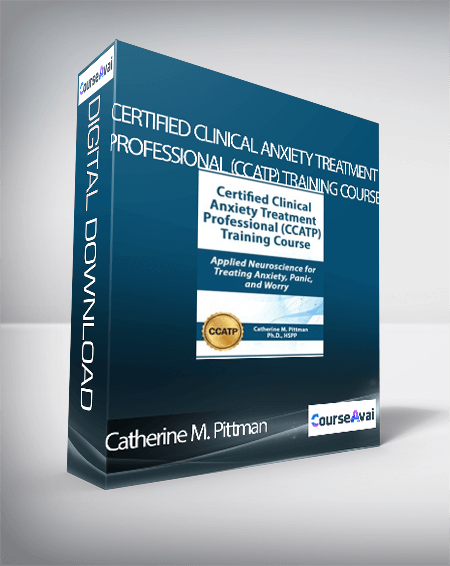





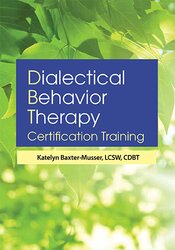
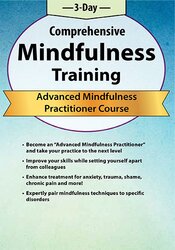
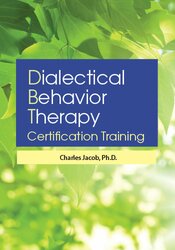
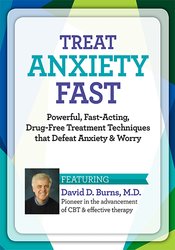
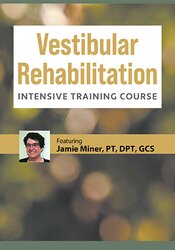
There are no reviews yet.